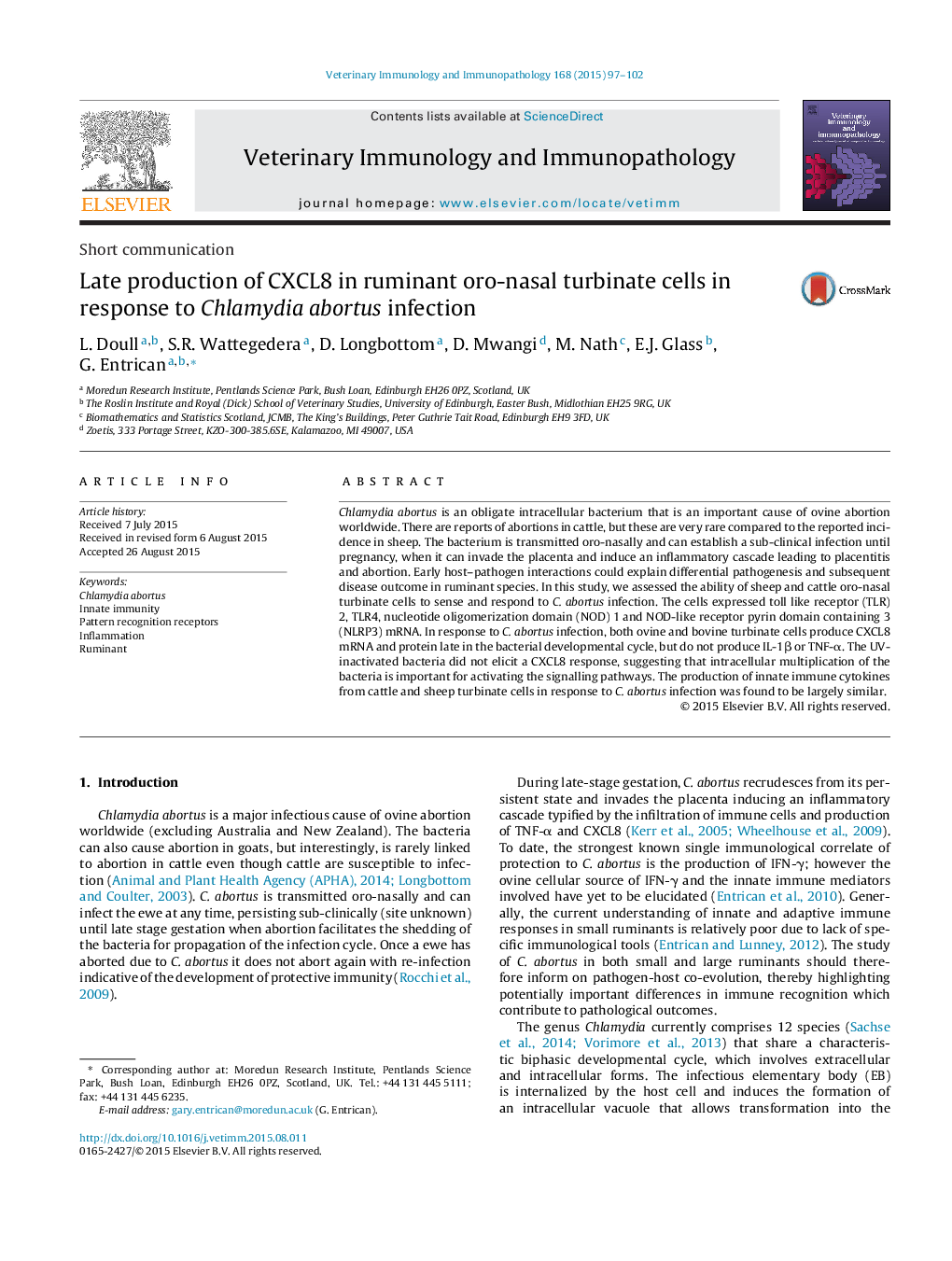| کد مقاله | کد نشریه | سال انتشار | مقاله انگلیسی | نسخه تمام متن |
|---|---|---|---|---|
| 5796714 | 1555017 | 2015 | 6 صفحه PDF | دانلود رایگان |

- Expression of pattern recognition receptors by ruminant turbinate cells.
- Production of CXCL8 occurs late in the chlamydial developmental cycle.
- Production of CXCL8 is dependent on chlamydial multiplication.
- Cattle and sheep turbinate cells respond to chlamydial infection in a similar manner.
Chlamydia abortus is an obligate intracellular bacterium that is an important cause of ovine abortion worldwide. There are reports of abortions in cattle, but these are very rare compared to the reported incidence in sheep. The bacterium is transmitted oro-nasally and can establish a sub-clinical infection until pregnancy, when it can invade the placenta and induce an inflammatory cascade leading to placentitis and abortion. Early host-pathogen interactions could explain differential pathogenesis and subsequent disease outcome in ruminant species. In this study, we assessed the ability of sheep and cattle oro-nasal turbinate cells to sense and respond to C. abortus infection. The cells expressed toll like receptor (TLR) 2, TLR4, nucleotide oligomerization domain (NOD) 1 and NOD-like receptor pyrin domain containing 3 (NLRP3) mRNA. In response to C. abortus infection, both ovine and bovine turbinate cells produce CXCL8 mRNA and protein late in the bacterial developmental cycle, but do not produce IL-1β or TNF-α. The UV-inactivated bacteria did not elicit a CXCL8 response, suggesting that intracellular multiplication of the bacteria is important for activating the signalling pathways. The production of innate immune cytokines from cattle and sheep turbinate cells in response to C. abortus infection was found to be largely similar.
Journal: Veterinary Immunology and Immunopathology - Volume 168, Issues 1â2, 15 November 2015, Pages 97-102